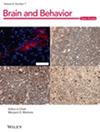White Matter Networks of Phonological Awareness in Chinese Readers
Abstract
Introduction
In our previous study, we have identified white matter subnetworks linked to phonological processing deficits (e.g., subnetworks centered at the left middle temporal gyrus) in dyslexic children from alphabetic languages using a data-driven hub-based white matter network analysis approach. Yet, white matter subnetworks associated with phonological processing skills in individuals from nonalphabetic languages (e.g., Chinese) have never been studied. This study aims to identify hub-related white matter networks associated with phonological processing skills in Chinese readers.
Methods
Sixty-five Chinese-speaking adults were classified into good readers (n = 37) and poor readers (n = 28) based on the severity of self-reported reading difficulties and dyslexia symptoms, as assessed by the Chinese adaptation of the Adult Reading History Questionnaire (C-ARHQ). We explored hub-related networks corresponding to phonological processing skills among the participants. Mediation analysis was further conducted to examine the relationship between white matter networks, phonological awareness, and character reading ability of these adults.
Results
We observed structural connectivity of two hub-related white matter networks accounted for individual differences of phonological awareness in Chinese readers: white matter networks surrounding the left middle temporal gyrus and the left fusiform gyrus. Follow-up mediation analysis revealed that the two white matter networks further contributed to the character reading ability of Chinese readers through phonological awareness.
Conclusions
The current study provides the first-hand empirical evidence for the white matter network of phonological processing skills in Chinese readers. The findings offer an important cross-linguistic insight into the white matter network corresponding to phonological processing in nonalphabetic languages.


 求助内容:
求助内容: 应助结果提醒方式:
应助结果提醒方式:


